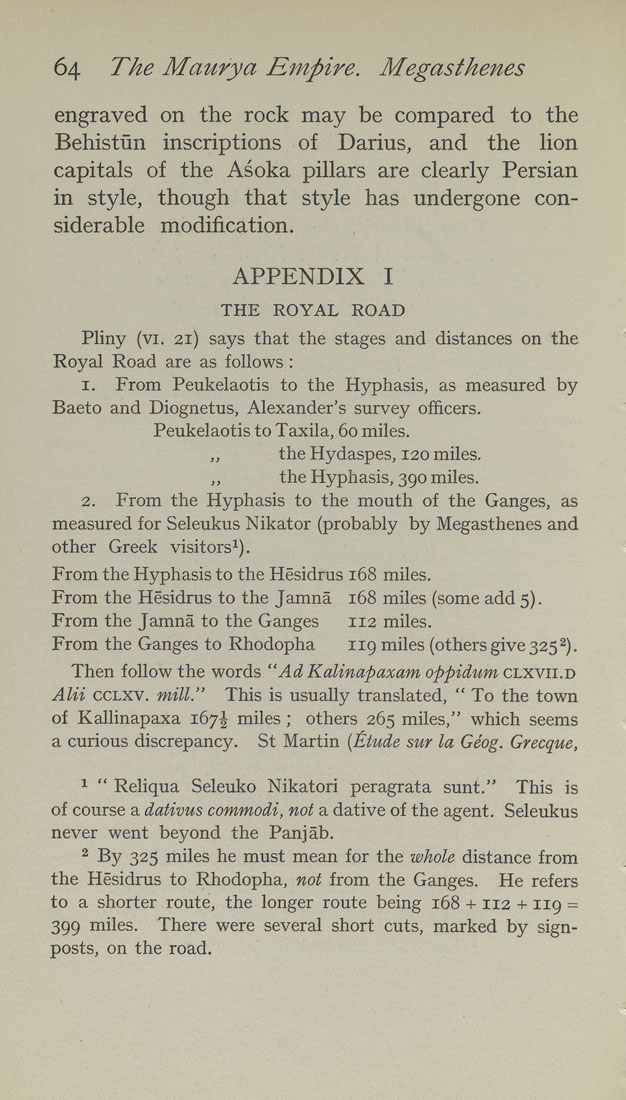64 The Maurya Empire. Megasthenes
engraved on the rock may be compared to the
Behistun inscriptions of Darius, and the lion
capitals of the Asoka pillars are clearly Persian
in style, though that style has undergone con¬
siderable modification.
APPENDIX I
THE ROYAL ROAD
Pliny (vi. 21) says that the stages and distances on the
Royal Road are as follows :
1. From Peukelaotis to the Hyphasis, as measured by
Baeto and Diognetus, Alexander's survey officers.
Peukelaotis to Taxila, 60 miles.
,, the Hydaspes, 120 miles.
,, the Hyphasis, 390 miles,
2. From the Hyphasis to the mouth of the Ganges, as
measured for Seleukus Nikator (probably by Megasthenes and
other Greek visitors^).
From the Hyphasis to the Hesidrus 168 miles.
From the Hesidrus to the Jamna 168 miles (some add 5).
From the Jamna to the Ganges 112 miles.
From the Ganges to Rhodopha 119 miles (others give 325 2).
Then follow the words "Ad Kalinapaxam oppidum clxvii.d
Alii CCLXV. mill." This is usually translated, " To the town
of Kallinapaxa 167J miles; others 265 miles," which seems
a curious discrepancy. St Martin {Etude sur la Geog. Grecque,
1 " Reliqua Seleuko Nikatori peragrata sunt." This is
of course a dativus commodi, not a dative of the agent. Seleukus
never went beyond the Panjab.
2 By 325 miles he must mean for the whole distance from
the Hesidrus to Rhodopha, not from the Ganges. He refers
to a shorter route, the longer route being 168 + 112 + 119 =
399 miles. There were several short cuts, marked by sign¬
posts, on the road.
|








